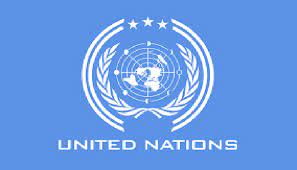Enforced Or Involuntary Disappearances (WGEID):

Since the coup in Myanmar, the United Nations Working Group on Enforced or Involuntary Disappearances (WGEID) has received reports of enforced disappearances from the family members of victims.
- Many Asian regimes are using enforced disappearances as a tool to suppress the people.
- An enforced disappearance occurs when a person is secretly abducted or imprisoned by a state or political organization, or by a third party with the authorization, support, of a state or political organization, followed by a refusal to acknowledge the person’s fate and whereabouts, with the intent of placing the victim outside the protection of the law.
- Enforced disappearances became widely known to the world in the 1970s and the early 1980s during the ‘Dirty War’ in Argentina.
- Dirty War, also called Process of National Reorganization, was a infamous campaign waged by Argentina’s military dictatorship against suspected left-wing political opponents.
Constituents of Enforced Disappearances:
- Deprivation of liberty against the will of the person.
- Involvement of government officials, at least by acquiescence.
- Refusal to acknowledge the deprivation of liberty or concealment of the fate or whereabouts of the disappeared person.
Recent Occurrences:
- Myanmar: The military is committed to suppressing the people’s movement, and the police are carrying out unimaginable acts of violence and oppression against those demanding freedom of expression and the restoration of democracy.
- China: Under the pretext of re-education to prevent terrorism, Uyghur minority ethnic group members are forcibly sent to what Chinese authorities call ‘vocational education and training centers’, with no information on their whereabouts.
- Sri Lanka: It has experienced more than three decades of domestic conflict accompanied by various forms of enforced disappearances.
- Pakistan and Bangladesh: Enforced disappearances are being committed in the name of counter-terrorism measures.
Global Measures:
United Nations Working Group on Enforced or Involuntary Disappearances (WGEID):
- In 1980, the UN Commission on Human Rights (now replaced with UN Human Rights Council) decided to “establish for a period of one year a working group consisting of five of its members, to serve as experts in their individual capacities, to examine questions relevant to enforced or involuntary disappearances of persons”.
- Functions:
- Assist Families:
- It assists families in determining the fate or whereabouts of their family members who have reportedly disappeared.
- Oblige States:
- It is entrusted with monitoring the progress of States in fulfilling their obligations deriving from the Declaration and to provide to Governments assistance in its implementation.
- Involves NGOs:
- It draws the attention of Governments and non-governmental organizations (NGOs) to different aspects of the Declaration and recommends ways of overcoming obstacles to the realization of its provisions.
- Assist Families:
International Convention for the Protection of all Persons from Enforced Disappearance in 2006:
- To protect the right to be free from enforced disappearances, the international community adopted the International Convention for the Protection of all Persons from Enforced Disappearance in 2006.
- This became effective in 2010 and the Committee on Enforced Disappearances (CED) was established.
- CED and WGEID coexist side by side and seek to collaborate and coordinate their activities with a view to strengthening the joint efforts to prevent and eradicate enforced disappearances.
- The number of participating states is still very low compared to other treaties.
- Among 63 member states of the treaty, only eight states from the Asia-Pacific region have ratified or acceded to the treaty.
- Only four East Asian states Cambodia, Japan, Mongolia, and Sri Lanka have ratified it.
- India has signed but not ratified it.




